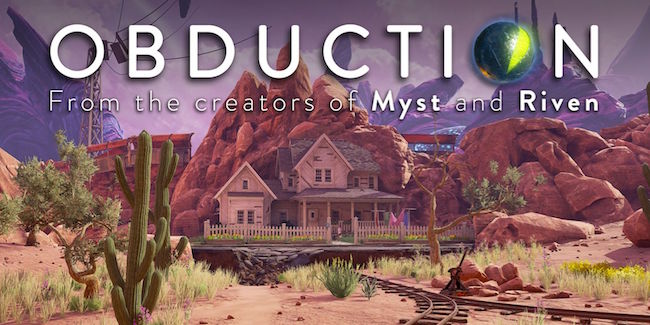
I’m stuck. I’ve been walking around these same areas for a solid half-hour now without a damn clue as to where to go next. I can feel the end is near, the sweet, tantalising nectar of conclusion beckoning at my footsteps, but how the hell I’m meant to get to the bleeder is beyond me. I’ve been stuck like this before only to have the solution so obviously reveal itself to me in the most embarrassing way, clearly due to my oversight rather than poor design. So, let’s just review the game and pretend I’m smart. Obduction is Myst 2.0, a game that any self-respecting puzzle-nut should play, and while it can be frustrating at times, the positives of this game far outweigh the negatives.
Obduction is a first-person puzzle game, hearkening back to the old architecturally mind-bending levels of Myst and Riven. The general vibe of play is almost identical to those old games, right down to the way the levels are so meticulously crafted. As you travel from world to world, you’ll find yourself getting lost in amongst the visionary architectures of these tiny spaces, and it feels like you’re right back on an island in Myst. Still, these levels would be meaningless without puzzles scattered throughout them.
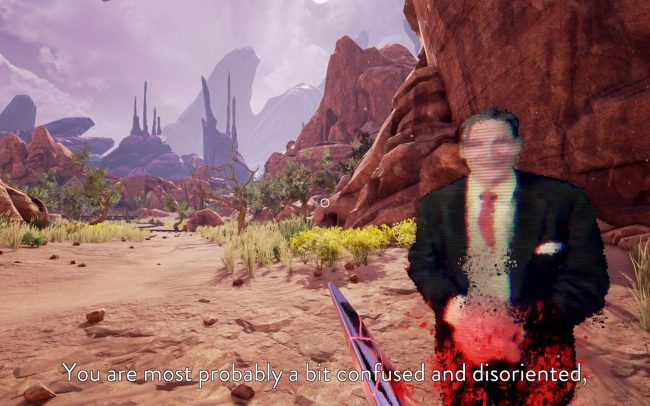
There are plenty of fiendish puzzles laid out for you to solve, but much like Myst, there isn’t any hand-holding. To give you a sense of the dastardly nature of the beast, one puzzle had me look for a licence plate, decode it into numbers using a telephone, and then dialling it to open a door. Once I heard the click of the lock disengaging, I couldn’t help but lean back and marvel at how ingenious that puzzle was. Some times seem like an eternal head-butt against a wall of adamantium (like figuring out how to get to the bleeder), but that makes solving the puzzles all the more satisfying. It’s a brilliant throwback to old-style puzzles that newer games have seemed to forget, but there are some things Obduction could have done with leaving behind.
Back in the days before game design was a well-developed subject, games varied a lot regarding pacing. Obduction’s speed, while certainly tolerable, is far from joyous. To go from one area to another can take aeons, and since many puzzles outright require you to reposition yourself, it can become tiresome to solve later puzzles that involve copious backtracking. The other nostalgic let-down was the usage of FMV, which often looked well-made but sometimes (especially for one of the main characters) looked like it was 1999 again. I know for a fact that Cyan can animate people well (Myst V proved that), so why FMV was employed is beyond me. Mind you; that’s the only part of the game that looks awful.
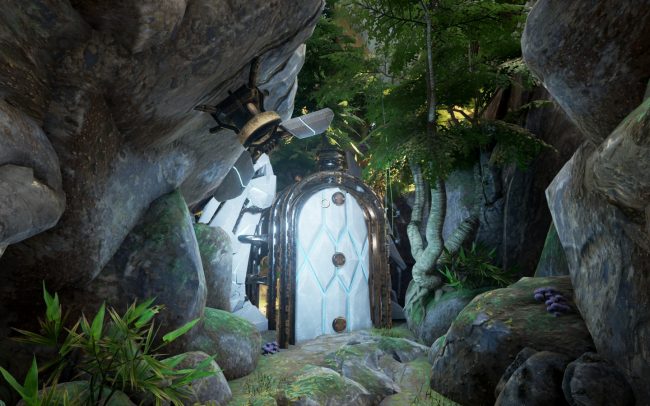
Obduction is a stunning game, and not just because UE4 makes all the shiny objects even shinier. The architecture of each world is immaculate, with areas being so ready for screenshotting that the space key is dedicated to taking photos. From almost any angle, the levels look like freshly conceived works of art, and the overall design helps to set up a feeling of epic proportions, despite the levels barely being the size of a school oval. There are some instances where closer examination leads to disappointingly blurry/vomit-inducing textures, but considering the incredible architecture of these levels, the imperfections are easy to overlook.
Assuming, that is, that you aren’t stuck in a loading screen. As you start getting further into the game, the necessity to obduct (aka, teleport yourself and a sphere around you) between different worlds becomes increasingly prevalent. Puzzles begin revolving around your ability to transfer things around you, but these are the weakest puzzles I’ve encountered thus far. One in particular involved rearranging objects via obduction and a rotating sphere, but it felt more like I was going through the motions than working my logic muscles. Loading screens between worlds aren’t quick either, so when the obduction gets frequent, the game becomes trying. This frustration is compounded by the sporadic but intriguing story.
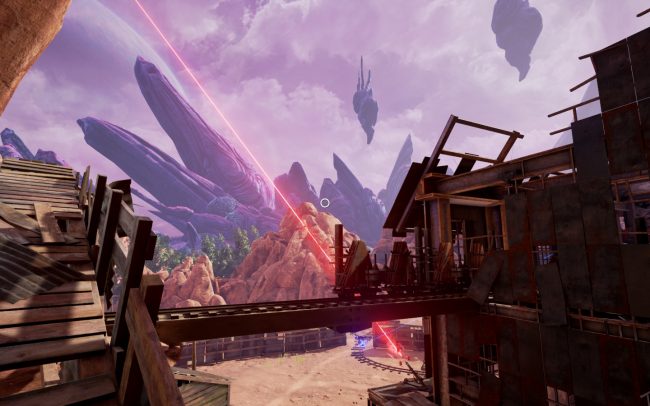
The story of Obduction is a little sci-fi epic involving obducted towns, the meeting of alien species and the inevitable hatred that comes with being alive. Without giving too much away, you are ‘scooped’ up into the small town of Hunrath, only to discover that it’s empty and on a different planet. You soon learn that this experience is nothing new, with humans amongst four alien races that have been subjected to this mysterious process. There’s nothing too fancy going on narrative wise, but there’s still enough to warrant moving forward, much like Myst. Although, it would have helped if one of the alien races wasn’t named the Villeins, which is pronounced as heavy-handedly as possible.
Speaking of heavy-handed, holy balls, my graphics card got slaughtered by this game! The loading screens weren’t short, but I ran into an alarming number of places where my framerate dropped like an Arai polyarch in heat (little alien humour for you). If you’re on a console like some barbarian, these issues probably won’t crop up, but given my hardware, I’m surprised that the game was chugging at all! Still, I could go on about how well Cyan has implemented their vision of a successor to Myst, and if that means running a few frames under 60fps, so be it.
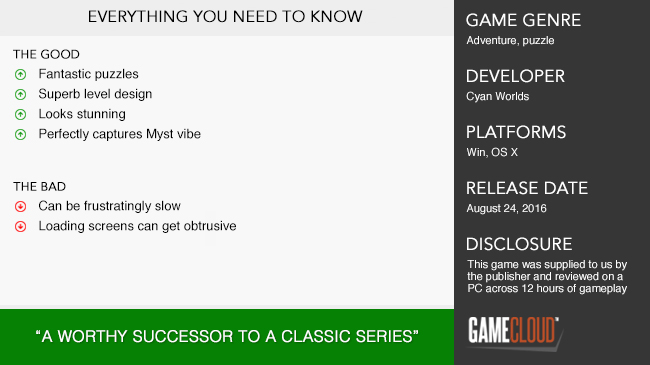
Obduction lives up to its forefathers far better than the definition of Obduction lived up to my expectations. Smart puzzles and level design bring back the old Myst atmosphere, while new graphics make it a stunning game to look at. It can get frustrating at times, especially when the obductions get more frequent, but those looking for a throwback like no other need look no further. I’m still stuck, by the way, but I feel so good about it.











